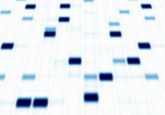Printing nanomaterials with plasma: the future of biological sensor manufacturing?

Researchers from NASA Ames Research Center (CA, USA) and SLAC National Accelerator Laboratory (CA, USA) have unveiled a new printing method that uses plasma to print nanomaterials onto 3D objects or flexible surfaces, which could make it easier and cheaper to build devices such as wearable chemical and biological sensors.
Currently, common methods to deposit nanomaterials onto a surface use an inkjet printer. However, the inkjet method lacks the ability to print onto flexible materials or 3D objects. This new method, published recently in Applied Physics Letters, facilitates printing onto any type of textile or 3D object.
“You can use it to deposit things on paper, plastic, cotton, or any kind of textile,” commented Meyya Meyyappan of NASA Ames Research Center. “It’s ideal for soft substrates.”
In addition to their limitations in substrate printing, inkjet printers are only able to print liquid ink, from which not all materials are easily created. Some nanomaterials can be printed using aerosol techniques, but these are limited by the necessity to heat the materials to extremely high temperatures in order to produce a thin and smooth film, which could cause some surfaces to burn.
This new method addresses these limitations, allowing materials to be printed at temperatures of approximately 40 degrees Celsius, and not requiring materials to be in liquid form.
The team profiled the new technique by printing multiwalled carbon nanotubes onto paper, demonstrating its ability to print without any type of patterning. The nanotubes were mixed into a plasma of helium ions, which were then blasted through a nozzle onto the paper. The benefit of using plasma is that it focuses the nanoparticles onto the receiving surface, producing a consolidating layer without the need for heating.
Using this technique, the team printed a biological and a chemical sensor. These sensors are able to identify and detect the concentration of a given molecule as the presence of different molecules alters the electrical resistance of the carbon nanotubes to varying degrees.
The chemical sensor was able to detect ammonia, and the biological sensor was able to detect dopamine, indicating a role for the new printing method in the diagnosis of disorders such as Parkinson’s disease. Given its ability to produce both qualitative and quantitative sensors, the new method could be utilized for a range of biosensing applications, such as health biomarker monitors for cholesterol.
The research team also highlighted the versatility of the method. It utilizes a simple nozzle, which could be scaled up to print on large areas, or used to spray nanoparticles on 3D surfaces evenly.
Meyyappan suggests that the method is ready for commercialization, and could soon provide an inexpensive and straightforward solution for printing biological sensors, among other applications.
Sources: Gandhiraman R, Singh E, Diaz-Cartagena D, Nordlund D, Koehne J, Meyyappan M. Plasma jet printing for flexible substrates. Applied Physics Letters. DOI:10.1063/1.4943792 (2016); AIP press release.






